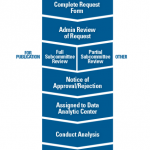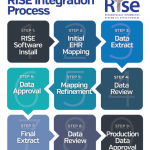Technology
A perfect data transfer may be the goal, but errors are bound to occur and remain somewhat expected, Dr. Bajaj says. He suggests rheumatologists focus on avoiding the common mistakes and work with vendors to solve template and interoperability issues.
“Because of the way the system is right now, practices and providers benefit from seeing more patients in less time, [because] that equates to reimbursement. But the burden of documenting accurate data continues to fall on the providers. It is easy to click on the wrong check box or radio button. Human errors are going to happen; to err is human,” Dr. Bajaj says. “I think technology also plays a role [in the introduction of errors]. Technology allows providers to copy and paste from one note to another and build templates that can be pre-populated before the patient arrives, which increases the potential for error. Autocorrection during dictation can also produce errors. There could be human error within that, but technology is contributing to it.”
Dr. Bajaj says the RISE registry is using language processing “to read through notes to find key elements in the note and get the right data.” He says he could see an expanded role for artificial intelligence in the future to document and capture accurate data. For now, efforts are focused on more seamless connection and mapping of data between the clinician, the practice and the registry.
“Discreet areas [records fields] are easily captured by any registry,” he says. “These areas in a note or encounter can take only particular values and can be in the form of check boxes, radio buttons, selectable values or specific fields to input dates, etc. And rather than the machine language processing, where it has to go through the whole note to figure out the keywords, discreet areas are usually much more helpful. I think that it is a real concern for any registry—gathering the right data in the best way that avoids errors and poor data entry. I think all of us are trying to work to stay on top of it.”
RISE Results
Mr. Larosa says one issue RISE encounters is incomplete or inoperable data transfer from an EHR system. Sometimes an EHR isn’t able to transfer data to RISE; other times the EHR shares only a portion of the available data.
“It’s not that the data are bad,” Mr. Larosa says. “The data are either not coming through or not coming through in the way we need it to. Specifically, for RA, we experience this with cloud-based providers. They don’t send us everything. They only send us what they think we need for our quality measures. … That does not create false positives in the registry; it just doesn’t populate in the numbers we need it to.”


